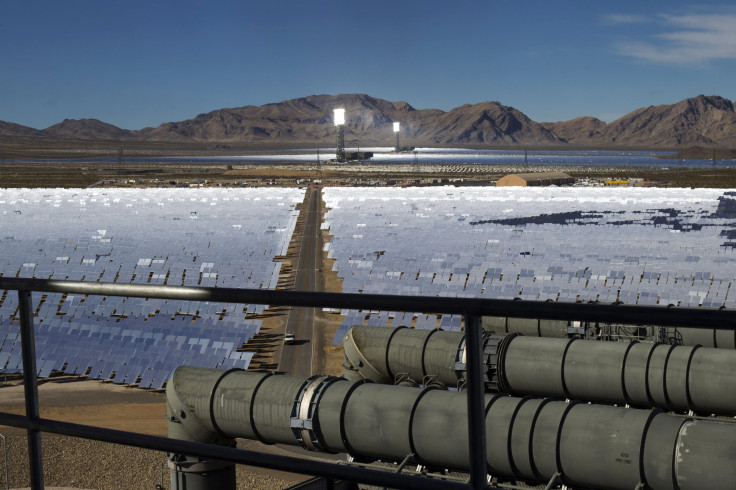Google Clean Energy: $1 Billion Investments Protect Environment And Company's Bottom Line

After spending more than $1 billion on 15 different wind and solar energy projects, Google Inc. (NASDAQ: GOOG) says that 34 percent of its operations are now powered by renewable energy.
One of these investments, a solar thermal project in Ivanpah, finally activated after Google invested $168 million in April, 2011. The Ivanpah Solar Electric Generating System is the largest solar power plant in the world and uses a system of sun-tracking mirrors, or “heliostats,” to produce 392 megawatts of electricity that will power 140,000 homes in California.
It’s all part of Google’s goal to be 100 percent powered by renewable energy, a mission protect the environment as well as the Mountain View, Calif.-based company’s bottom line.
In its recent earnings report, Google revealed that it spent $2.25 billion on data centers and infrastructure, most of that related to energy costs.
When Google acquired Nest, a deal made official last week, some expected that Google would apply the technology behind the smart thermostat to create a more intelligent power grid for its clean energy projects.
Not everyone is positive about Google’s investments in energy. Some think that the money could be better spent elsewhere, while others think building massive solar panels and windmills is a waste of land.
Even environmentalists have raised issues about the 350,000 mirrors at the Ivanpah solar power plant. The air around the panels can reach up to 1,000 degrees Fahrenheit and have killed several birds. Environmentalists also say that the Ivanpah project endangers desert tortoises and bighorn sheep by eliminating water sources.
Oddly enough, environmental concerns like these are some of the biggest obstacles that stand in the way of Google’s goal of being 100 percent reliant on renewable energy.
Not that it is stopping the company. Google invested $80 million in six solar facilities in California and Arizona in November, and followed in December with another $75 million for a windmill facility in Texas. These facilities are expected to go online by the end of 2014.
© Copyright IBTimes 2024. All rights reserved.




















